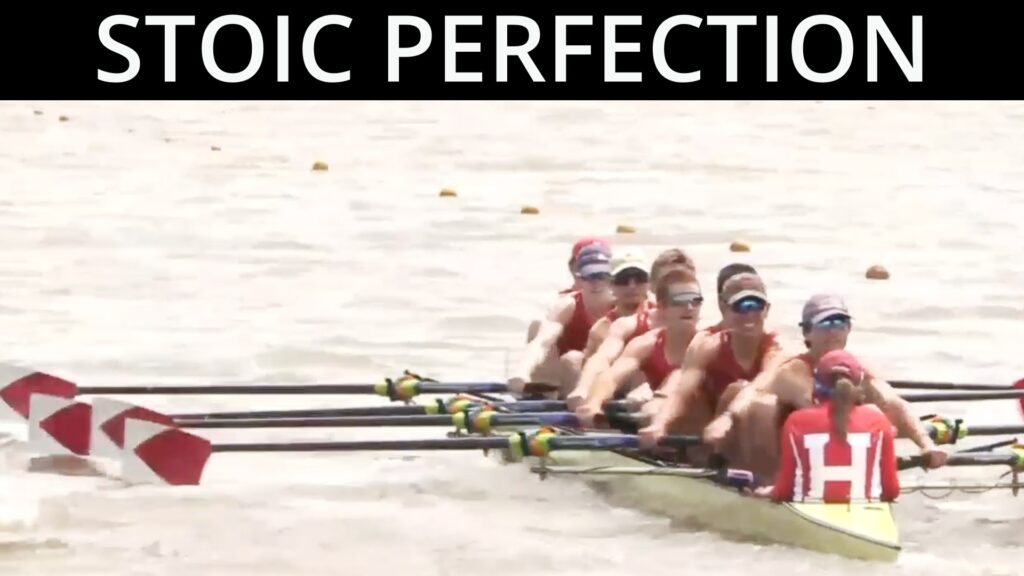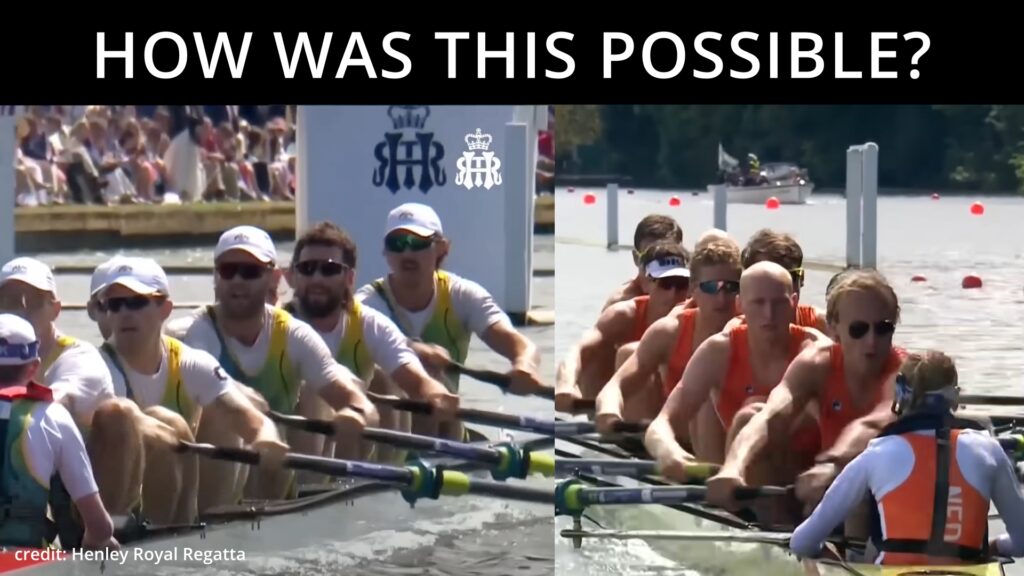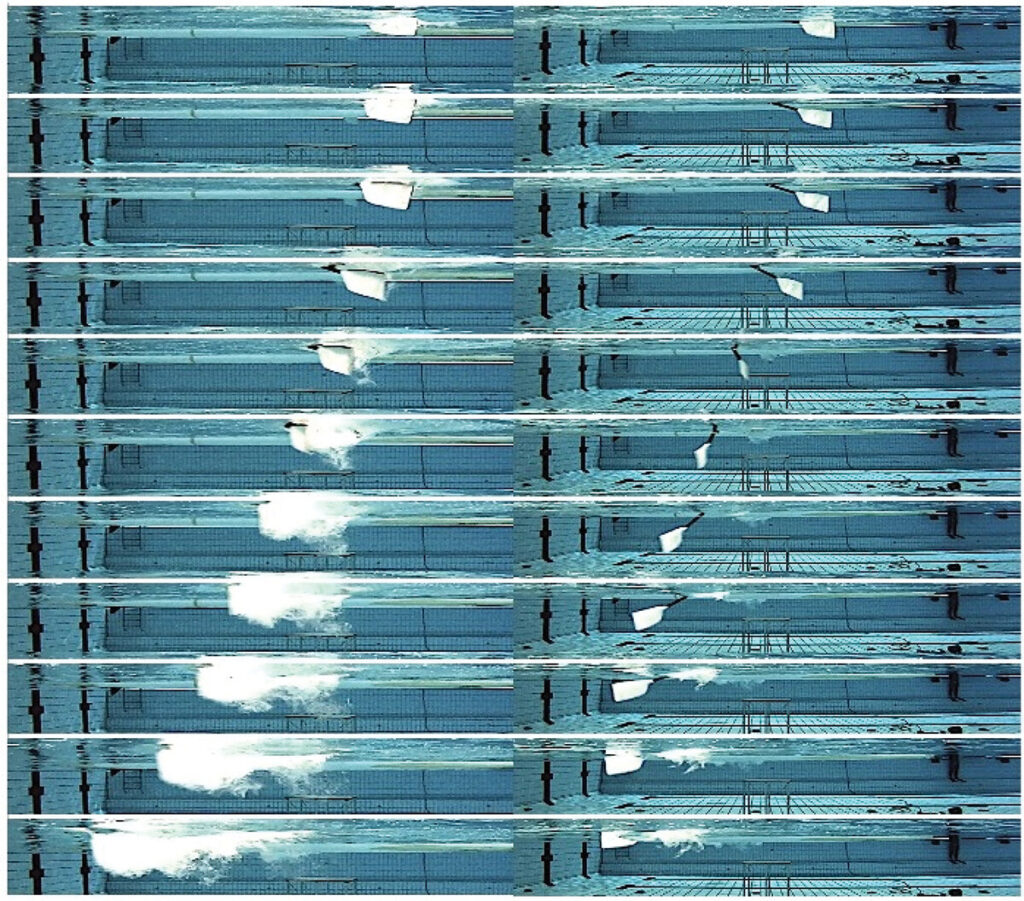
Why the 2025 Harvard Mens lwt Eight one of the best in the world (video analysis of 2025 IRA final)
Here are my personal preparation notes for the video analysis of the 2025 IRA grand final in the mens lightweight eight, specifically focusing on Harvard.
0:23 Harvard has a conservative start, going for the long game. Focus on driving the boat, rather than moving themselves eagerly around in the boat
1:14 First crews paying for the excessive start speed that was not their true race speed. Psychological advantage: gone. What is left is substance. You cannot fake substance at a such a high level.
1:28 Instead of blasting out at the start, Harvard focused on driving the boat together with joint body weight use through joint leverage. Patient connection at the catch and opening of the upper body into the finish, all without losing connection to the foot stretchers. The tandem rigging shows that they leave no stone unturned to make things happen.
1:48 Harvard makes more meters per stroke than anyone else. It is a very similar picture to the video analysis of the Henley Grand Final 2025, Australia vs Netherlands. Stroke rate and handle speed are secondary parameters, and not the ones to focus on.
Why is this the case?
I think it is because of force curve adaption to each other. Not perfect, but better than the others who might not be doing this at all.
Force curves in boats are good to have, but the influence rowers have on each other is distracting from the true picture.
BIOROWER excursion:
As a coach, I want laboratory conditions, where athletes show their true selves, their true rowing handwriting. The argument to be interested in what happens in the boat is valid, but does not take into consideration that I want to know how rowers move when they have no energy left to make somebody else appear good or bad.
Am I saying that this is happening in the Harvard boat? I do not know about that boat in particular, but I do know about other very well-known eights, where rowers know exactly how to make another rower look stupid, for example by having an excessively hard catch.
1:55 Even here, during the first 1000m, there is a distinct reset phase at the finish, after the exit. It is a phase of collecting everyone’s body mass for another propulsion cycle of recovery-acceleration before the drive acceleration.
3:37 I understand, the tandem rig better now: 4-seat was closely put behind a template rower. The upper torso stiffness makes him take too long to get a good connection on the blade. Maybe the correlation was not drawn during training, but what must have been apparent was the difference in blade work.
A stiffer upper torso, and lack of pelvic mobility leads to different force curves: the handle motion is tied to the shoulder rotation, and thus the hands go up at the catch / during the connection phase. Consequently, the blade goes in deeper than it should, and thus you create a lot of slip on the blade.
Logically, the force pick-up at the catch is not the same.
My assumption is that 4-seat is strong on the linear drive rowing machine, but did not deliver enough in the boat (for the mentioned reasons) and also would not have performed well on the BIOROWER, where this issue would have been noticed right away. By the way, this issue could have been addressed on the BIOROWER long before the water season.
Putting a physically strong but technically not as strong rower behind somebody who does have the right flexibility and looseness, improves the overall timing of the boat. If you are so close behind a good rower, there is really no other way but to adapt – at least to a certain degree.
3:41 That said, 4-seat is still making an air stroke at the catch, which is perceived as a “faster oar handle speed around the catch”.
3:44 Harvard missing a full stroke, coping very well with it, getting back into the rhythm quickly.
3:56 Look at the choppy conditions. This is not fun and very prone to catch crabs.
4:00 Even close to the finish line, there is still the prevalent idea of moving the boat together over the middle drive.
4:05 That joint drive is gorgeous
4:17 Dartmouth making a last push trying to disturb Harvard in their rhythm, pushing them to lose their joint work.
If anybody comes close to them in terms of efficiency, it is Dartmouth. Their distance per stroke is equally good.
4:36 Look at Dartmouth 7-seat. What a glorious rowing style towards the end of the race. Long, firm and body weight driven.
4:47 Immense pressure on Harvard at the moment, yet they still stick together. This is when most crews fall apart: you are being asked questions, and if you, as a rower in that boat, decide (consciously or subconsciously) decide to answer these questions all by yourself, your boat’s unified stroke structure will fall apart. And no matter how great your individual effort is, no matter how heroic you think you are acting, fact is: a team boat only works if you contribute to the joint force curve, namely sticking to the boat’s handwriting:
BIOROWER excursion: show different force curve styles when people sprint
4:56 shows how long Harvard remain. It is not just “getting the stroke rate up”. It is keeping the speed or getting the speed up a bit more: drive and boat motion focused, not body motion focused.
5:10 Harvard is accelerating their boat until the end of the drive, every stroke. This is the best possible response to the push from Dartmouth. Every Harvard rower sticks to the plan. This is a master class in eights rowing.
5:25 Pure joy to watch
What sets Harvard apart from the rest, is their overall idea of how to move the boat, namely past the anchored blades. Also, the pause after the exit, or at least a distinct slow down sets the tone for a joint rhythm anchor, which takes them through all challenges, crabs and rough conditions. Their strategy discipline is their greatest asset.
Well done, Harvard.





The part about the force curves is definitely true. We were an international crew racing at HOCR, boating out of Harvard. We had finished our race just as they had started warming up on the RP3 rowing machines. It was a 15-20 min paddle with a few bursts. For any stroke, not only was their sequence perfectly in time, but the force curves lined up exactly, and looked identical to each other, even as the rate went up. It was quite something to see.
If they did the same thing on a true rowing machine, imagine how fast they could be.